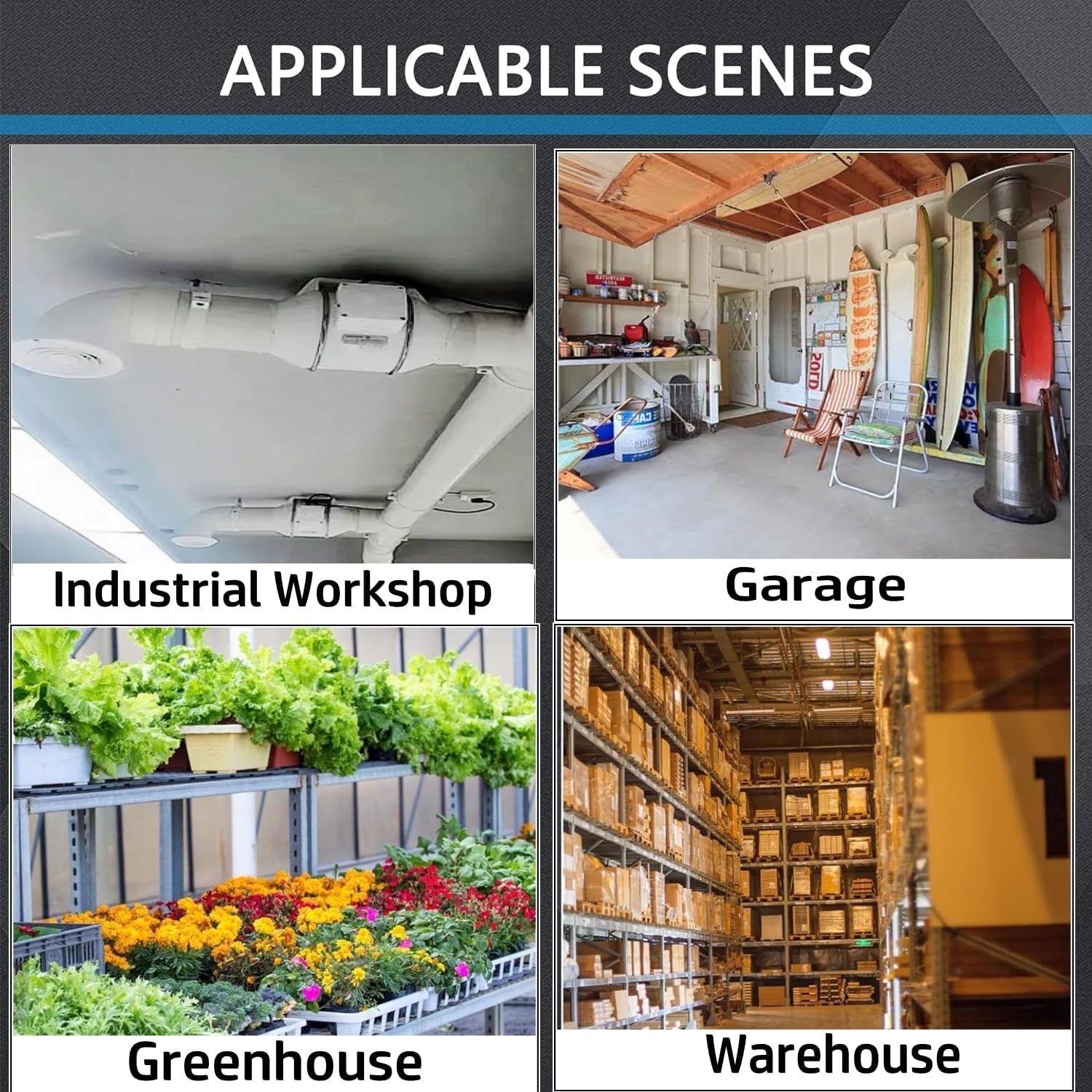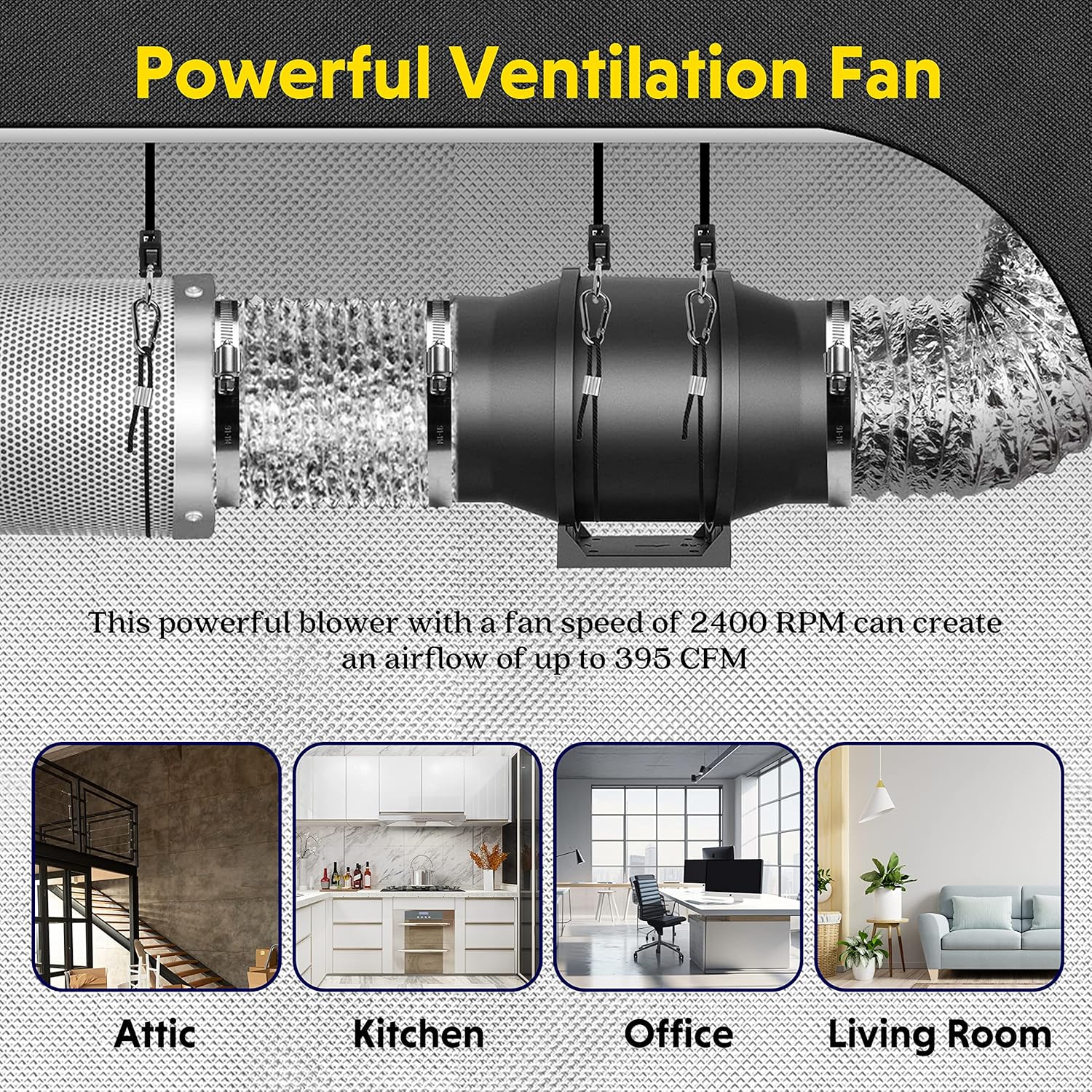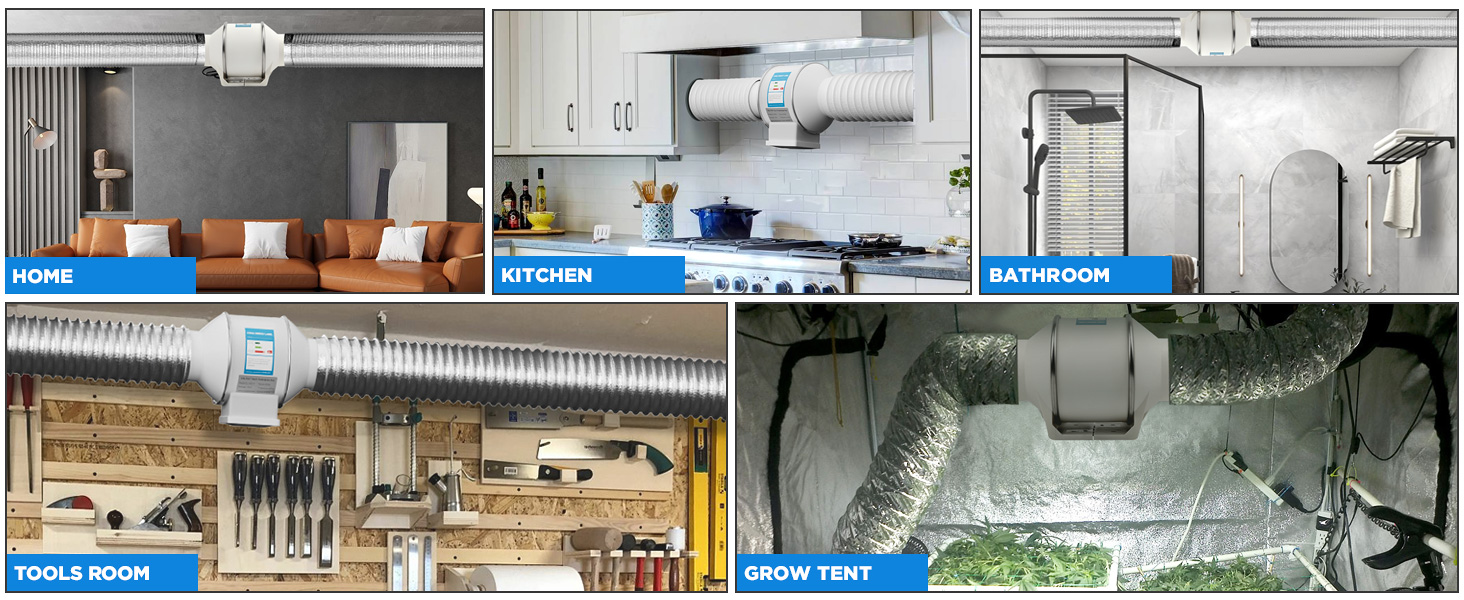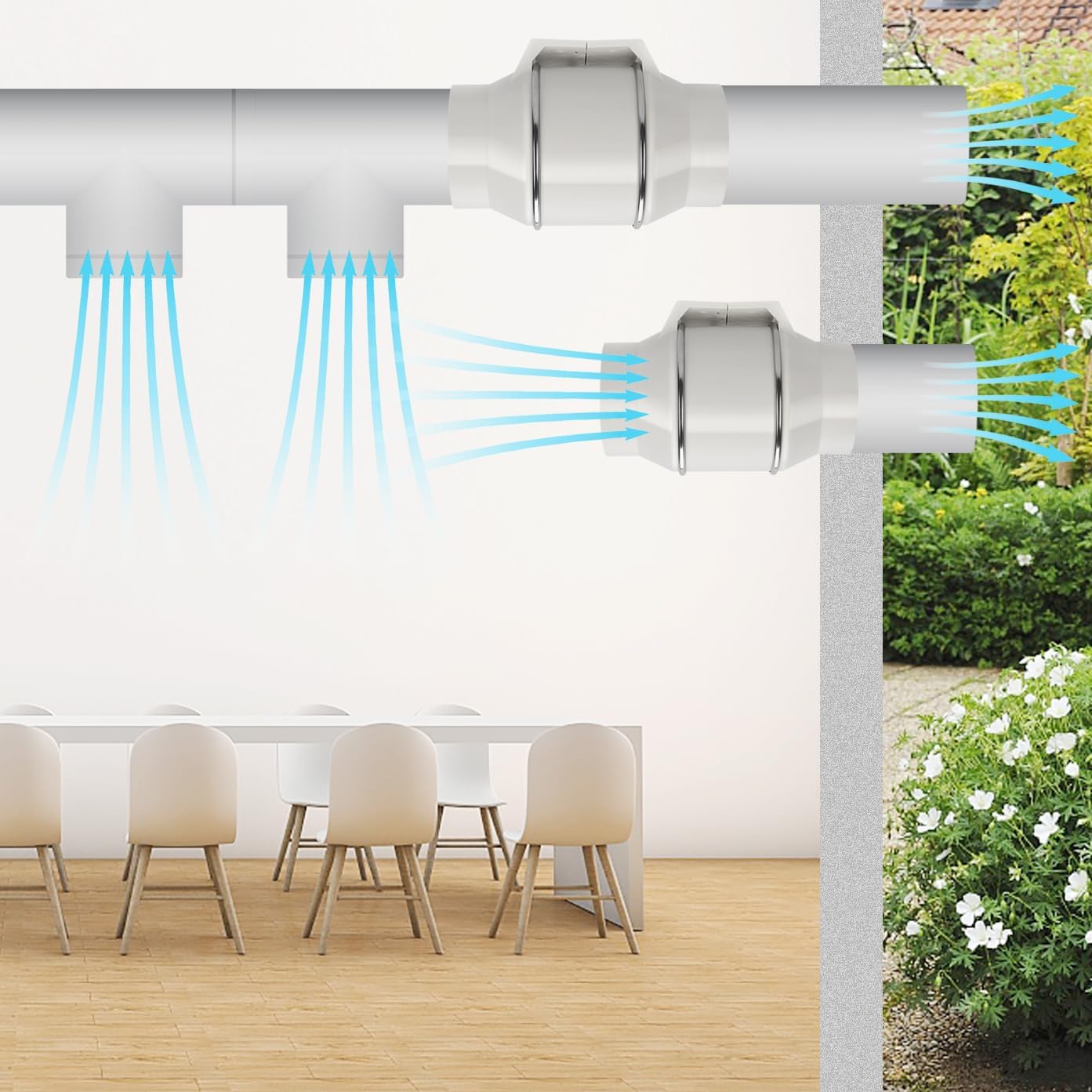Choosing the right ventilation solution is critical to maintaining air quality, comfort and efficiency in any space, whether it is a home, office or business. In this regard, the inline tube fan is key and has powerful air motion capabilities. However, not all inline fan fans are equal. Looking for silent inline fans is often on the list of residential and noise-sensitive commercial applications, highlighting a key differentiator in a market that ranges from basic hair dryers to options for complex air management systems. Understanding these differences is key to choosing a fan that meets your specific ventilation needs without unnecessary noise or mismatch to the task at hand.
The quiet revolution: the silent inline duct fan and the traditional model

One of the most important advances in ventilation technology is the development of silent inline tube fans. Traditionally, strong fans often mean destructive noise levels that make them unsuitable for living spaces, offices, or quiet business environments (such as libraries or studios). However, modern engineering introduced a quiet tube fan that utilizes aerodynamic blade design that reduces reduced materials and precision motors to operate at near-ascent levels. This is in stark contrast to older or more industrial models that prioritize the sheer power of acoustic comfort. A quiet fan fan not only moves the air; it enhances the environment by providing the necessary ventilation without adding ambient noise, making it ideal for bedrooms, home offices, and any area where peace and tranquility are crucial. The difference is not only in decibels, but also in overall quality of life and work efficiency.
Airflow power chamber: High CFM pipe fan and compact blower
Apart from noise, the main function of any duct fan is air motion, usually measured in cubic feet per minute (CFM). Here, there is a clear difference between high CFM tube fans and their smaller counterparts such as small inline fan fans or inline blower fans. High CFM pipe fans are targeted at larger spaces or applications that require a large amount of air exchange, such as commercial kitchens, workshops, or wide range of growth operations. These units can move a large amount of air, effectively removing pollutants, heat or humidity. In contrast, small inline fan fans are ideal for targeted ventilation in smaller areas such as bathrooms, single office compartments, or small-sized tents. Likewise, an inside blower may be chosen because it is able to operate through shorter pipes to increase airflow in existing systems. The choice depends entirely on the volume of the space and the required ventilation intensity. Using a high CFM fan in a small bathroom can be too large, while a small inline fan will struggle in a large warehouse.
Application versatility: Commercial piping fans with professional inline solutions
The wide range of applications for inline fans leads to a comparison between a powerful commercial piping fan and a more professional solution. Commercial fan fans are often built for durability and continuous operation in demanding environments such as factories, large retail spaces or restaurants. They are often made with heavy-duty construction and powerful motors designed for life under pressure. On the other hand, a general inline conduit fan can be customized for more specific needs. For example, an inline conduit fan designed for hydroponics or growth tents will emphasize precise environmental controls, including humidity and temperature regulation, while an inline conduit fan in a residential kitchen may prioritize grease resistance and ease of cleaning. Modern design offers a stylish aesthetic to blend into a variety of settings from the house to the premium tool room, ensuring functionality does not compromise style. The adaptability of inline conduit fans makes it a tailor-made solution, whether it is removing steam in the bathroom or managing air quality in a dedicated repository.
Make the Right Choice: Key Things to Note for Your Inline Fan Fans
Choosing an ideal inline tube fan involves several key factors. Noise levels are a major problem for many people, making silent inline tube fans the preferred choice for comfort. Airflow capacity (CFM) must match the size of the space and ventilation requirements; a high CFM unit suitable for large areas, and a smaller option for local needs. Durability and building materials are also important, especially for commercial duct fans or fans exposed to harsh conditions. Furthermore, energy efficiency is an increasingly important aspect, and new models can provide better performance with lower power consumption. Consider a specific environment: does it require grease and moisture resistance, a bathroom with humidity control or an open tent that requires precise air circulation? Answering these questions helps narrow the options down to the most suitable inline duct fans.
Access the world of ventilation solutions
Ultimately, the best inline tube fans are fans that perfectly balance performance, noise, durability and application-specific requirements. Whether you need a fan fan that whispers to your home, a powerful unit for commercial spaces, or a dedicated inline blower fan for unique projects, the market offers a variety of solutions. For those who choose these options, sourcing from suppliers with a comprehensive range and expertise can simplify the process. From residential exhaust fans to industrial systems, companies that provide a “one-stop-buy” experience for a variety of ventilation needs can provide valuable guidance and ensure you find the best match for your needs, helping you achieve the best air quality and efficiency and reliability. For example, Ningbo Aoshun Electrical Co., Ltd. Prideed for its flexibility and extensive business scope, it covers everything from ceiling-mounted exhaust fans to industrial fans and caters to the needs of wholesalers, buyers and retail customers, and promises a commitment to excellent service.





